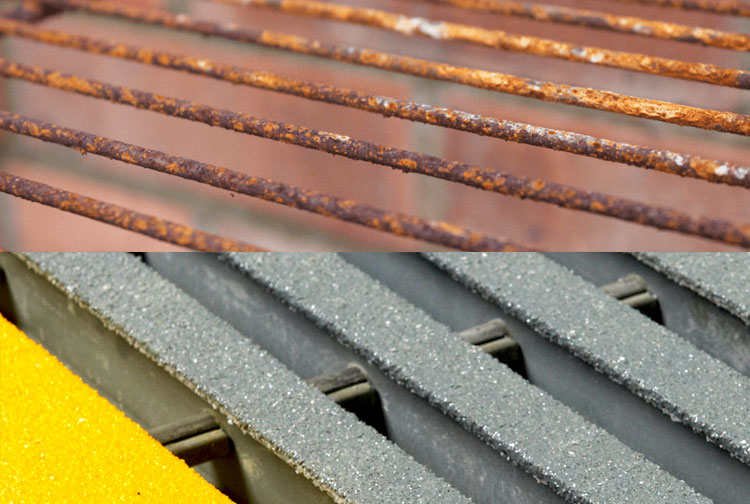When selecting trench gratings for industrial applications, the choice between fiberglass reinforced plastic (FRP) and steel is a critical one. Both materials offer unique properties, but FRP has emerged as a superior choice due to its exceptional performance in demanding environments. This article will delve into the key differences between FRP and steel trench gratings, highlighting the advantages that make FRP the preferred option for many industries.
Understanding FRP and Steel Trench Gratings
FRP trench gratings are composite materials made by combining fiberglass fibers with a resin matrix. This combination results in a strong, lightweight, and corrosion-resistant product. Steel trench gratings, on the other hand, are made from various types of steel, providing high strength but are susceptible to corrosion and rust.
Why FRP Trench Gratings Outperform Steel
Corrosion Resistance:
FRP: FRP gratings are inherently resistant to corrosion from a wide range of chemicals, acids, and saltwater. This makes them ideal for use in harsh environments such as chemical processing plants, wastewater treatment facilities, and marine applications.
Steel: Steel gratings are prone to rust and corrosion, especially in humid or corrosive environments, requiring frequent maintenance and replacement.
FRP: FRP gratings are significantly lighter than steel gratings, making them easier to handle, install, and transport. This reduces labor costs and installation time.
Steel: Steel gratings are heavy, which can increase installation costs and require more structural support.
Safety Features:
FRP: FRP gratings are non-conductive, making them safe for use in electrical hazardous areas. They also offer excellent slip resistance, reducing the risk of accidents.
Steel: Steel gratings can be conductive, posing a safety hazard in electrical environments. They may also become slippery when wet.
Maintenance:
FRP: FRP gratings require minimal maintenance. They are resistant to staining and do not require painting or coating.
Steel: Steel gratings require regular maintenance, including painting and coating, to prevent corrosion and maintain appearance.
Cost-Effectiveness:
FRP: While the initial cost of FRP gratings may be higher than steel, their long lifespan and low maintenance requirements make them more cost-effective over time.
Steel: The ongoing maintenance costs of steel gratings, including replacement and repairs, can significantly increase the total cost of ownership.
Customizability:
FRP: FRP gratings can be customized to meet specific project requirements, including size, shape, color, and load capacity.
Steel: While steel gratings can also be customized, the options may be more limited compared to FRP.
Applications of FRP Trench Gratings
FRP trench gratings find applications in a wide range of industries, including:
Chemical Processing: Handling corrosive chemicals and acids
Wastewater Treatment: Withstanding harsh chemicals and wastewater
Food and Beverage: Ensuring hygiene and preventing contamination
Marine Applications: Resisting saltwater corrosion and marine growth
Industrial Facilities: Providing safe and durable flooring in hazardous environments
Conclusion
When it comes to selecting trench gratings, FRP offers a compelling combination of benefits, including corrosion resistance, lightweight design, safety features, and cost-effectiveness. While steel gratings may be a suitable option for some applications, FRP is the clear choice for most industrial settings due to its superior performance and long-term value. By choosing FRP trench gratings, businesses can improve safety, reduce maintenance costs, and enhance the overall efficiency of their operations.
 +86 15303735673
+86 15303735673 Jessica@frpzs.com
Jessica@frpzs.com
 Technical Data
Technical Data












